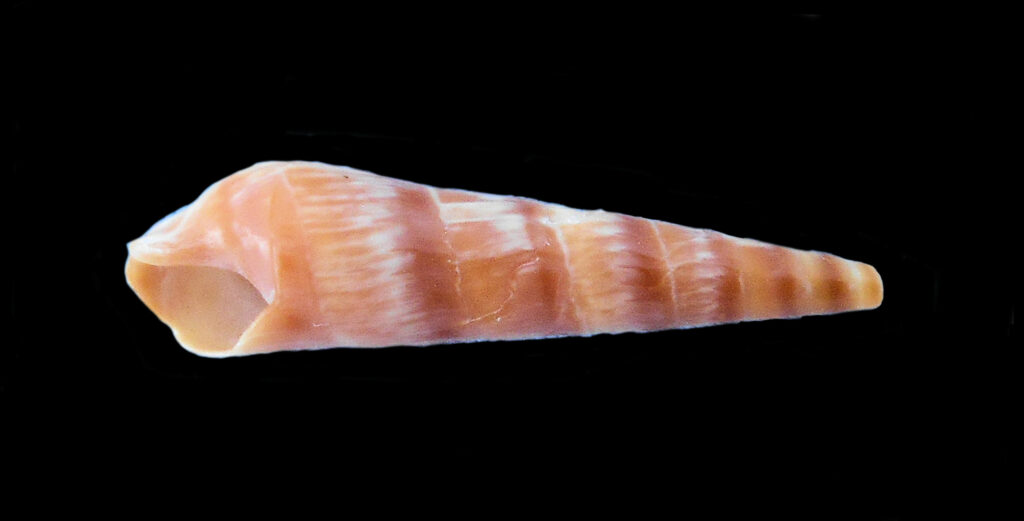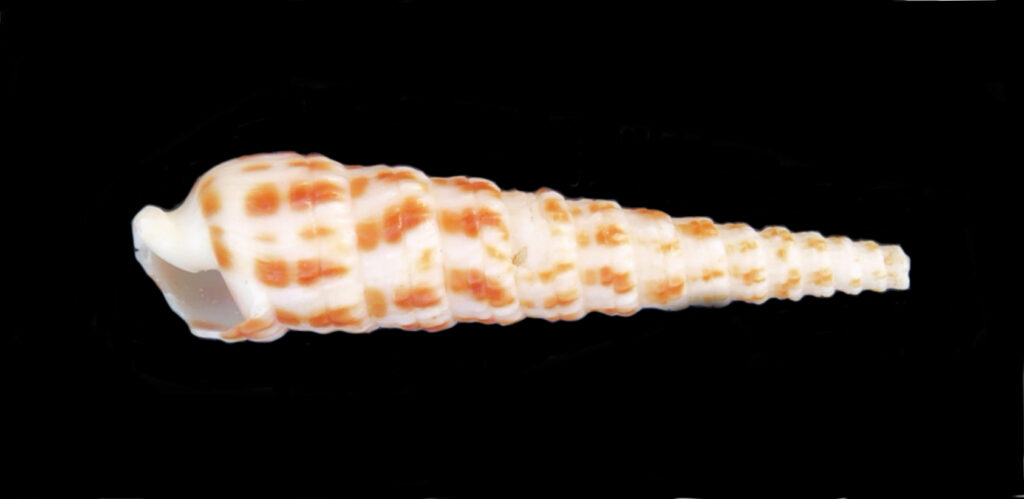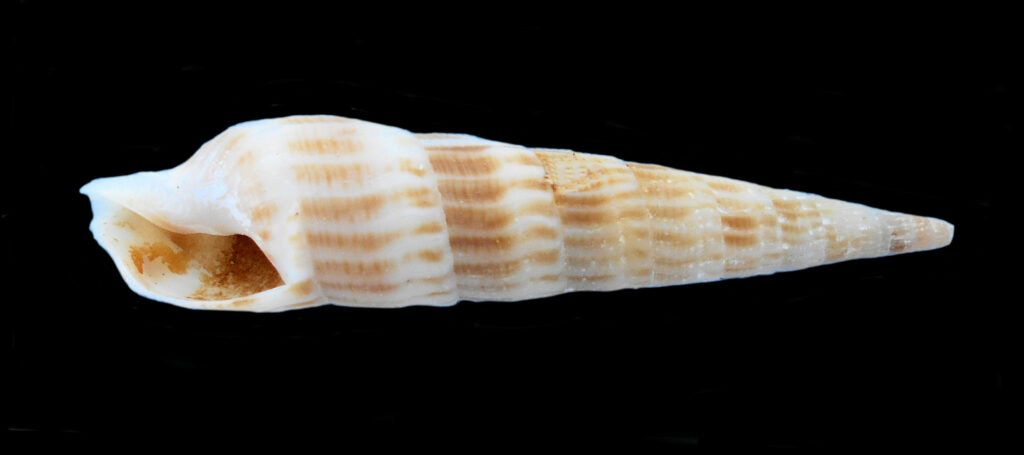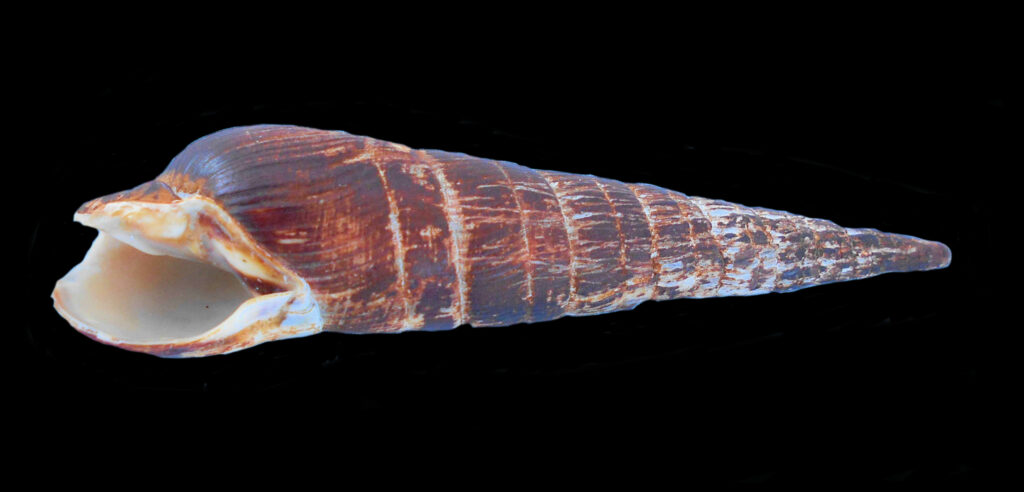The Auger Shells in the Terebridae Family are elongated shells with a very high, many-whorled, spire and a small body whorl. They are similar in shape and easily confused with the Tower or Turret Shells of the Turritellidae Family. They differ in that Augers have a more irregular shaped aperture that always descends to a siphon canal or notch. Also, the whorls of Auger Shells are more convex than the flat-sided whorls of the Tower Shells. The external sculpting of Auger Shells may consist of spiral and/or length-wise ridges, or knobs. The outer lip of the aperture is unsculpted and sturdy, but thin; the interior lip may be marked with folds. Some species have a fairly polished exterior surface. Tropical species may be brightly colored and they are not covered with a periostracum. Auger Shells can range in size from small to large. Auger Shells are usually found just under the surface within sand and muddy sandy substrate. They prey on polychaete, and other, worms utilizing, similar to cone shells, a barbed radular tooth that injects paralyzing venom into their prey. In turn Auger Shells are eaten by crabs, fish, and predatory mollusks. They are found globally in all tropical and temperate seas, intertidally to depths up to 300 m (1,000 feet). There are more than three hundred known species in the Terebridae Family of which thirty-one are found along the coastlines of the Baja Peninsula.



